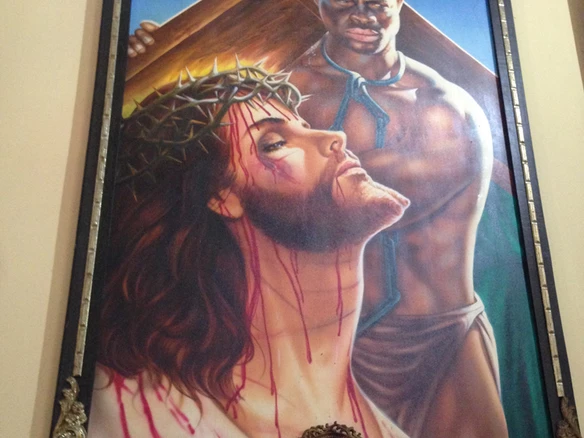
Riosucio, Caldas; The Devil, Slavery & Parties

The trip from mountainous, beautiful Manizales to Medellin is only 184 kilometres, however the best case scenario by bus takes 4 hours. The scenery is dramatic and in order to visit as much as possible along the way, I chipped in with a couple of other travellers I met the previous day to hire a private tour that would include stops through coffee plantations.
The drive was excellent, hot and painfully long. Leaving Manizales at 9am (and including a short city tour), we arrived in Medellin at 9pm – 12 hours – and then the guide and driver apparently drove all the way home…

I did not really know a great deal about the area but, as the official translator on the trip, I listened to every word and learned a great deal.
Riosucio (dirty river) is a municipality in the department of Caldas in central Colombia. It is historically home to a large indigenous group known as the Embera whom nowadays are principally coffee farmers.

Now the story becomes a little harder. All European groups enslaved the Embera who – and I quote “were too lazy to be good slave, because they do not work hard and just do handicrafts”. (I like to think they resisted slavery.)
Consequently, the Europeans imported African slaves.
Thus, amid the crime of slavery, a multicultural and multi-religious social environment arose around two competing communities.
Finally, after independence and the end of slavery, a group of priests decided to unite the communities through common religious belief and it turns out that between Catholics & Protestants, Indigenous beliefs and the adapted African beliefs of former slaves the one uniting factor was in fact a belief in a devil figure.
It would seem no one had a clear image of good, but bad was fairly universal.
And now, every two years, crowds come from around Colombia and the world to celebrate the devil festival and to eat, drink and be merry!
Please follow and like us:

#colombia #manizales #Medellin #centralamerica #caldas #riosucio
